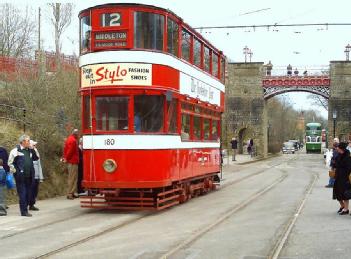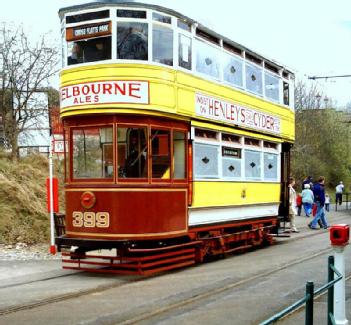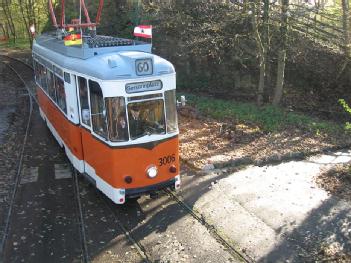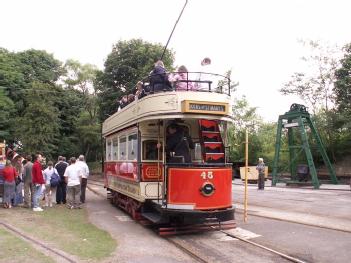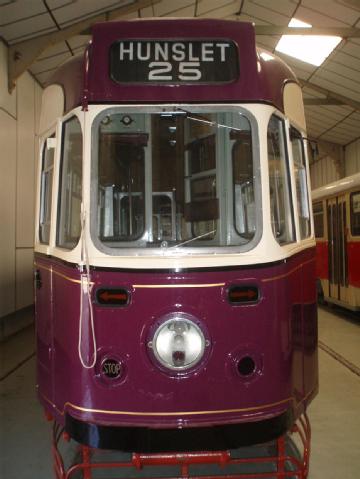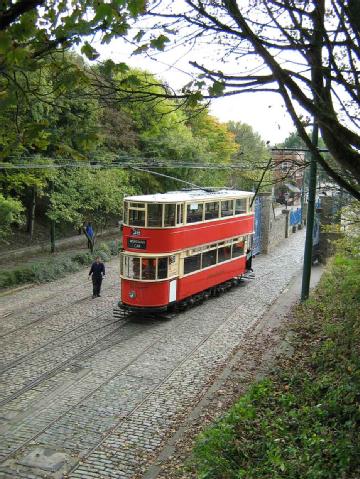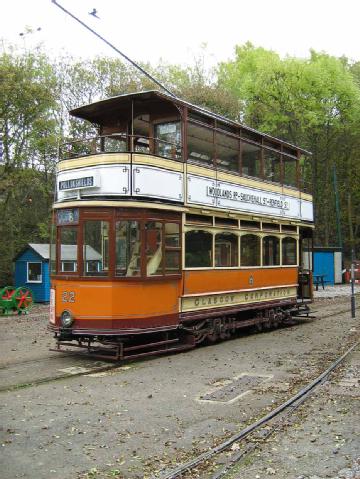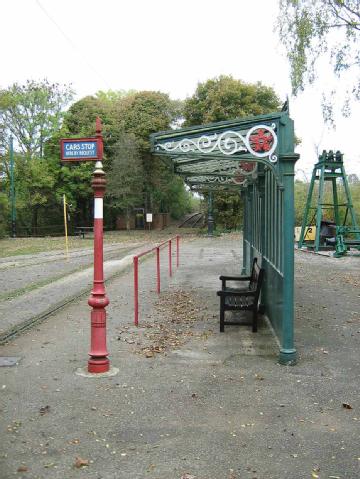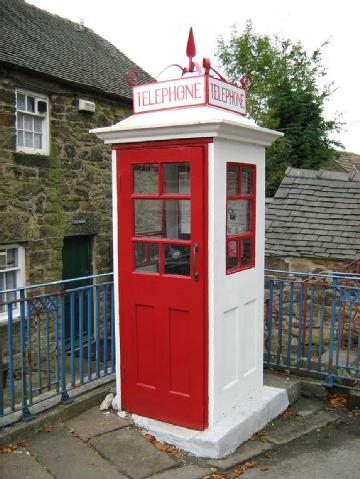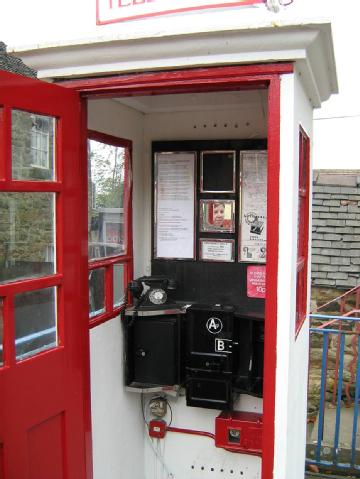
   |
National Tramway Museum |
DE4 5DP Crich, Great Britain (UK) (Derbyshire) |
|
| Address |
Crich Tramway Village, nr Matlock,
|
| Floor area | unfortunately not known yet |
Museum typ
Exhibition
Trams
- Mining
- Telephone / Telex
- Printing technology
|
Opening times
|
2013: 1st September - 3rd November Daily 10.00 - 4.30pm 2014: Saturday 29th March - Sunday 2nd November |
||||
|
Status from 10/2013
|
Adult: £13; Child (4-15 years): £8 | ||||
| Contact |
|
||||
| Homepage | www.tramway.co.uk | ||||
Our page for National Tramway Museum in Crich, Great Britain (UK), is not yet administrated by a Radiomuseum.org member. Please write to us about your experience with this museum, for corrections of our data or sending photos by using the Contact Form to the Museum Finder.
| Location / Directions |
By Public TransportThe nearest railway station is Whatstandwell, from which it is a steep uphill walk of about 1 mile. Alternatively, there are railway stations at Belper, Matlock and Alfreton through which East Midlands Trains operate regular trains to and from Derby. These stations are reachable by a local bus service (limited Sunday and Bank Holiday Monday service) or by Taxi.Local buses run every day from Matlock, Alfreton, Ripley and Belper. By CarCrich is conveniently situated close to many of the main routes running through the Midlands. This makes it readily accessible from Sheffield, Derby, Nottingham, Leicester, Stoke-on-Trent, Birmingham and beyond. Just 8 miles from junction 28 of the M1, Crich can also be easily accessed using the A38, the A6, the A61 and the A52. |
| Description | From Wikipedia, the free encyclopedia: The National Tramway Museum, is situated within Crich Tramway Village, a period village containing a pub, cafe, old-style sweetshop, including the tram depots. The village is also home to the Eagle Press, a small museum dedicated to letterpress printing including an 1859 Columbian printing press. The museum's collection of trams runs through the village setting. Visitors are transported one mile out into the countryside and back, aboard the varied fleet of trams. The trams at Crich mostly ran along the streets of cities in United Kingdom before the 1960s, with some trams rescued and restored (even from other countries) as the systems closed. Tramcar fleetThe museum has over 60 tramcars from locations such as Berlin, Blackpool, Chesterfield, Den Haag, Derby, Douglas, Dundee, Edinburgh, Gateshead, Glasgow, Grimsby, Halle, Howth, Johannesburg, Leeds, Leicester, Liverpool, London, New York, Newcastle-upon-Tyne, Oporto, Paisley, Prague, Sheffield, Southampton and Sydney. The majority of the trams at Crich are double-deck trams built between 1900 and 1930, and several have open tops. There are a few trams in the collection that were built after the Second World War, and these give an idea of how the British Tram Industry may have developed if services had not declined.About seventeen vehicles are currently in operational condition, with more on display or being restored. Every operating day, the museum selects between two and four trams and operates them over its line to Glory Mine, via Wakebridge. In addition, there is a 1969 Berlin Tram that has been converted into an "Access Tram", which allows the less able to travel over the line. Methods of current collectionThe museum's overhead wire system has been built so that trams with any type of current collection can be used. The museum currently houses trams with trolley poles, bow collectors and pantographs.Other forms used to demonstrate how current can be collected: * Conductors set in steel troughs under the roadway, as used in Blackpool, and represented in Crich with Number 4. * The stud contact system, as demonstrated with a dummy stud between the rails in the yard. This is the only known example of this form remaining, and is from Wolverhampton. |
Radiomuseum.org presents here one of the many museum pages. We try to bring data for your direct information about all that is relevant. In the list (link above right) you find the complete listing of museums related to "Radio & Co." we have information of. Please help us to be complete and up to date by using the contact form above.
[dsp_museum_detail.cfm]
| Data Compliance | More Information |
